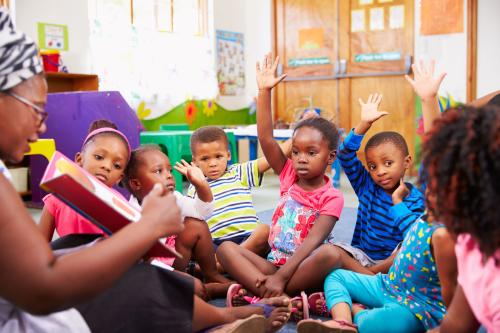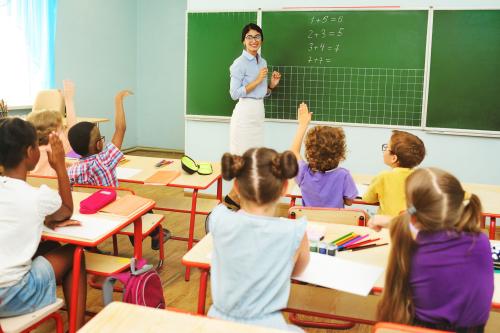In biology, adaptation is the process by which organisms fit themselves to a changing environment (think Darwin). In global development, it can refer to people adjusting to shocking change in ways that highlight political inequities (consider a population facing extreme drought). In education, it can describe teachers tailoring curriculum to students’ learning styles (as in universal design for learning). In each domain, adaptation is a process of facing the unexpected, finding a new way of acting, and oftentimes altering the status quo in the process.
Eighteen months (and counting) of humans responding to the COVID-19 pandemic fits all three definitions.
Within the community of policymakers, implementers, and researchers working to scale education innovations, it has become axiomatic to be mindful of incorporating adaptations into initial design and ongoing, continuous improvement loops. It’s stressed that adaptation should be a mindset as much as a technical approach. And recent work at the Center for Universal Education has led to a practical guide for tracking adaptations in scaling.
Through learning alongside education implementers and researchers in our current Research on Scaling the Impact of Innovations in Education (or ROSIE), we’ve been investigating not only how COVID-19 prompted adaptations in scaling education innovations that set new practices in motion but how these new practices themselves have initiated new effects and other practices. If a scaling environment is a complex adaptive system, then any one change will set in motion other, second- and third-order changes that ripple out to cause still more changes… and so on.
For example, when schools closed in Kenya, the ABRA/READS initiative faced a challenge: How could children access its digital literacy program when the computers were located in the schools? The initiative adapted an existing 20-week noninformation, communications, and technology version of the ABRA program and printed weekly ABRA/READS literacy materials for the home. Using WhatsApp, the initiative supported teachers to visit homes, deliver weekly bundles of instructional materials and books, and check on students. Not only did this keep the program running, but positive effects spilled over, too. Teachers got to know students’ families and see students in the home environment. This strengthened family engagement and provided teachers with broader views of their students. Additionally, during the visits, teachers noticed older siblings reading the READS early-literacy materials with their younger brothers and sisters—literacy had become a family event. Capitalizing on this, ABRA/READS began printing and delivering higher-level readings for the older children, too (though that wasn’t part of the initial project). And, finally, ABRA/READS incorporated life skills and socioemotional themes into the readings to help children cope with the emotional upheaval of a pandemic.
A second example not only showcases the benefits but highlights a challenge. Due to extra caution around COVID-19, the Improving Literacy of Children through Support from Community Networks project restricted travel in Nicaragua for the program’s literacy specialists. Because the national specialists couldn’t move from region to region to support the community literacy partners running the afterschool reading camps, the program moved its training online and asked community volunteers to take on increased responsibility for the camps. Furthermore, although Nicaragua never closed its public schools, attendance dropped off significantly, and the community volunteers maintained engagement with the out-of-school students, too. All this meant that these community volunteers stepped up their work and increased local ownership of the project—a holy grail for many innovations at scale. Yet, the adaptation also revealed a challenge of relying on community volunteers. Because the pandemic impaired the Nicaraguan economy, community partners faced financial hardships and many had to exit the project in search of paid work. When the volunteers left, they not only took their hard work with them but their training and institutional memory, as well.
No change is an isolated event: It will always trigger other changes and effects that alter the larger system.
We found other examples: From governments endorsing ed tech when physical travel was impossible to local churches and community centers emerging as new settings for learning. From the sudden priority of teaching local educators how to maintain hardware for online learning to policymakers getting creative with slashed education budgets. No change is an isolated event: It will always trigger other changes and effects that alter the larger system.
Alert innovation scalers and researchers faced COVID-19’s pandemic by adapting their projects in creative ways. Those adaptations not only addressed the direct challenges but set in motion accompanying effects and indirect changes, too, which can be missed if folks aren’t looking for them. Many of these indirect effects are positive, some are negative, and all will continue to evolve and initiate still other effects over time. These “knock-on effects” may be unavoidable, but we encourage scalers and researchers to identify—and if necessary, mitigate them—just the same. Their potency can often be harnessed in service of scaling for impact.
Of course, a global pandemic is a dramatic unpredictability, but it’s effective in starkly underscoring the scaling axiom. Building an adaptative strategy into scaling is key, but participants must also be primed to recognize and nimbly respond to the potential second- and third-level effects of the changes they’re initiating. Additionally, the accompanying research must be flexible enough to readjust in ways to investigate the new effects.
If we can incorporate these lessons into our scaling work, maybe this will be one positive outcome of the otherwise heartbreaking COVID-19 pandemic: an evolution in which scaling for impact moves to its next, more advanced iteration. Please let us know if you have your own examples of this phenomenon in practice; we’d love to hear from you.
Note: This project is supported by the Global Partnership for Education Knowledge and Innovation Exchange (KIX), a joint partnership between the Global Partnership for Education (GPE) and the International Development Research Centre (IDRC). The views expressed herein do not necessarily represent those of GPE, IDRC or its Board of Governors.
Brookings is committed to quality, independence, and impact in all of its work. Activities supported by its donors reflect this commitment and the analysis and recommendations are solely determined by the scholar.






Commentary
Adapting education innovations and their ‘knock-on effects’ in the time of COVID
November 8, 2021